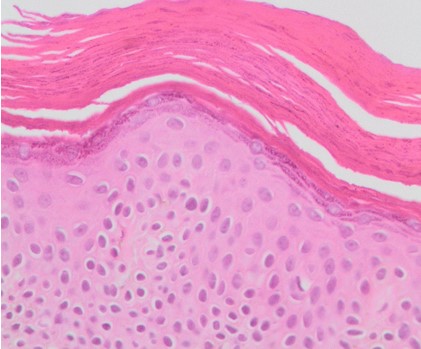Abstract
Objective: To establish the prevalence of carotid stenosis (≥50%) in a population with stroke between the years 2014 to 2018 and to compare it with the previous data.
Methods: A cross-sectional study was performed. Patients older than 18 years with acute ischemic stroke were included, who in the etiological evaluation documented a significant carotid stenosis (≥ 50%), with a description of their main risk factors, studies and interventions.
Results: Of 413 patients with stroke, 51 patients with stenosis > 50% were found with a prevalence of 12.3%. The former prevalence between 1996-2002 was 16%. Mean age was 78 years with men (51%). Among the risk factors, there was a higher proportion of arterial hypertension (76.5%), followed by dyslipidemia (47%). In 15/51 of the cases it was possible to check the agreement in the diagnostic imaging tests, with a concordance of 54% to qualify the stenosis grade. In 59% of the subjects the etiologic classification of the stroke was due to great vessel disease, with a small percentage of surgeries (12%).
Conclusions: A similar prevalence of carotid stenosis was found regarding previous literature, with the decreased in risk factors like smoking and less atherosclerotic markers and lower coronary artery disease.
2. Christensen MC, Valiente R, Sampaio Silva G, et al. Acute treatment costs of stroke in Brazil. Neuroepidemiology. 2009;32(2):142–9.
3. Moreno E, Rodríguez J, Bayona-Ortiz H. Trombólisis endovenosa como tratamiento del ACV isquémico agudo en Colombia: una revisión sistemática de la literatura. Acta Neurológica Colomb. 2019;35(3):156–66.
4. De Weerd M, Greving JP, De Jong AWF, et al. Prevalence of asymptomatic carotid artery stenosis according to age and sex systematic review and metaregression analysis. Stroke. 2009;40(4):1105–13.
5. Falk E. Pathogenesis of atherosclerosis. J Am Coll Cardiol. 2006;47(8):7–12.
6. Badimon L, Vilahur G. Thrombosis formation on atherosclerotic lesions and plaque rupture. J Intern Med. 2014;276(6):618–32.
7. Rothwell PM, Warlow CP. Low risk of ischemic stroke in patients with reduced internal carotid artery lumen diameter distal to severe symptomatic carotid stenosis: Cerebral protection due to low poststenotic flow? Stroke. 2000;31(3):622–30.
8. Avezum Á, Costa-Filho FF, Pieri A, et al. Stroke in Latin America: Burden of disease and opportunities for prevention. Glob Heart. 2015;10(4):323–31.
9. Barnnet HJM, Taylor DW, Haynes RB. Beneficial effect of carotid endarterectomy in symptomatic patients with high-grade carotid stenosis. N Engl J Med. 1991;325(7):445–53.
10. Brott TG, Halperin JL, Abbara S, et al. Guideline on the management of patients with extracranial carotid and vertebral artery disease: Executive summary. J Neurointerv Surg. 2011;3(2):100–30.
11. Cosottini M, Pingitore A, Puglioli M, et al. Contrast-enhanced three-dimensional magnetic resonance angiography of atherosclerotic internal carotid stenosis as the noninvasive imaging modality in revascularization decision making. Stroke. 2003;34(3):660–4.
12. Wabnitz AM, Turan TN. Symptomatic carotid artery stenosis: Surgery, stenting, or medical therapy? Curr Treat Options Cardiovasc Med. 2017;19(8):1–12.
13. Amarenco P, Bogousslavsky J, Caplan LR, et al. The ASCOD phenotyping of ischemic stroke (updated ASCO phenotyping). Cerebrovasc Dis. 2013;36(1):1–5.
14. Sacco RL, Kargman DE, Gu Q, et al. Race-ethnicity and determinants of intracranial atherosclerotic cerebral infarction. Stroke. 1995. p. 14–20.
15. Strömberg S, Nordanstig A, Bentzel T, et al. Risk of early recurrent stroke in symptomatic carotid stenosis. Eur J Vasc Endovasc Surg. 2015;49(2):137–44.
16. Flaherty ML, Kissela B, Khoury JC, et al. Carotid artery stenosis as a cause of stroke. Neuroepidemiology. 2012;40(1):36–41.
17. Abbott AL, Bladin CF, Levi CR, et al. What should we do with asymptomatic carotid stenosis? Int J Stroke. 2007;2(1):27–39.
18. Spence JD. Asymptomatic carotid stenosis: Why a moratorium is needed on intervention outside clinical trials. Neurology. 2017;88(21):1990–1.
19. Varón X, Bayona H. Prevalencia de enfermedad carotídea y relación con factores de riesgo en pacientes con ataque cerebrovascular. Universidad el Bosque, Posgrados; 2002.
20. Nederkoorn PJ, Elgersma OEH, Mali WPTM, et al. Overestimation of carotid artery stenosis with magnetic resonance angiography compared with digital subtraction angiography. J Vasc Surg. 2002;36(4):806–13.
21. Lovrencic-Huzjan A, Rundek T, Katsnelson M. Recommendations for management of patients with carotid stenosis. Stroke Res Treat. 2012;2012:1–12.
22. Ong C-T, Wong Y-S, Sung S-F, et al. Progression of mild to moderate stenosis in the internal carotid arteries of patients with ischemic stroke. Front Neurol. 2018;9:1–7.
23. Joh JH. The prevalence and risk factors for atherosclerotic carotid stenosis and carotid plaque: A community-based screening study. J Vasc Surg. 2015;61(6):91S-92S.
24. Woo SY, Joh JH, Han SA, et al. Prevalence and risk factors for atherosclerotic carotid stenosis and plaque a population-based screening study. Medicine (Baltimore). 2017;96(4):2–7.
25. Barnett H, Guton RW, Eliasziw M, et al. Causes and severity of ischemic stroke in patients with symptomatic intracranial arterial stenosis. Stroke. 2009;40(6):1999–2003.
26. Enry H, Arnett JMB, Ayne DW, et al. Benefit of carotid endarterectomy in patients with symptomatic moderate or severe stenosis. N Engl J Med. 1998;339(20):1415–25.
27. Turunen MP, Hiltunen MO, Ylä-Herttuala S. Gene therapy for angiogenesis, restenosis and related diseases. Exp Gerontol. 1999;34(4):567–74.
28. Amarenco P, Kim JS, Labreuche J, et al. A comparison of two LDL cholesterol targets after ischemic stroke. N Engl J Med. 2020;382(1):9–19.
29. Markus HS, Droste DW, Kaps M, et al. Dual antiplatelet therapy with clopidogrel and aspirin in symptomatic carotid stenosis evaluated using doppler embolic signal detection: The clopidogrel and aspirin for reduction of emboli in symptomatic carotid stenosis (CARESS) trial. Circulation. 2005;111(17):2233–40.

This work is licensed under a Creative Commons Attribution 4.0 International License.
Copyright (c) 2021 Julieth Milena Rodríguez López, Hernán Francisco Bayona Ortiz, Carlos Fernando Martinez



